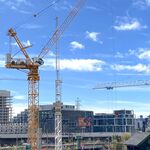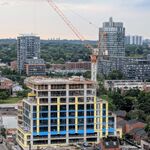Dan416
Senior Member
Quite simply why are you choosing to raise the issue now. There was network 2011, RTES, etc, etc that were virtually tossed into the dumpster when Miller proposed Transit City (and it was Miller, not the TTC as previously to proposed it). You can argue that funding was not there however I have yet to see a report where senior governments told the city "here's $18 million spend it how you wish", in fact the $18 million plan came before the funding so therefore the city could have proposed whatever it wished.
To the TC supporters it doesn't matter that the TTC already had plans on the books. They'll take their back-of-a-napkin TC over RTES etc any day because they're more concerned with sending LRTs to priority neighborhoods than transit planning. And don't even ask a Transit City supporter to compromise. You might as well try compromising with Republicans you'd get as far. Republicans and Transit City supporters might be on opposite ends of the political spectrum, but they share many qualities. They don't listen to rational arguments. They don't understand compromise. They get offended if you question any of their beliefs.






